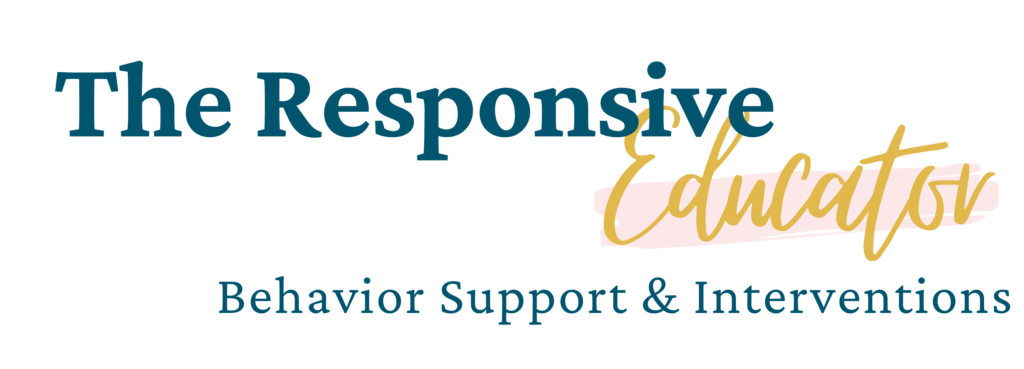

Table of Contents
ToggleBehavior Intervention Plans (BIPs) play a crucial role in addressing challenging behaviors and helping students succeed. The foundation of an effective BIP lies in setting SMART goals for behavior, ensuring that both the student and support team have clear, measurable objectives to work toward. Without well-defined goals, tracking progress and evaluating intervention success becomes challenging.
SMART goals for behavior provide a structured approach to creating meaningful and actionable objectives that drive real change. Here’s how you can use this method to set effective behavior goals in your BIPs.

SMART is an acronym that stands for:
By following this structure, you ensure that behavior goals are actionable and designed for success.

A strong BIP is only as effective as the goals it contains. If a behavior goal is too vague or open-ended, it becomes difficult to track progress and nearly impossible to determine whether interventions are working. That’s why SMART goals provide a crucial foundation for meaningful behavioral change.
When SMART goals are in place, expectations are clear for everyone involved—teachers, parents, and even the student. Rather than saying a student needs to “improve behavior,” a SMART goal defines exactly what success looks like and how it will be measured. This not only keeps the intervention team on the same page but also helps students understand what they’re working toward.
SMART goals also increase accountability by ensuring that progress can be tracked objectively. A well-defined goal includes measurable criteria—such as the number of reminders needed, the duration of engagement, or the frequency of an expected behavior—which removes guesswork from progress monitoring. This makes it easier to adjust strategies when needed instead of continuing an intervention that may not be effective.
Additionally, SMART goals help educators and support teams choose the right interventions. A goal that is time-bound and achievable ensures that strategies are designed for realistic progress, not just wishful thinking. If a student struggles with staying seated for 5 minutes, setting a goal for 30 minutes isn’t going to set them up for success. Instead, a well-crafted SMART goal outlines small, manageable steps that gradually lead to improvement.
For example, compare these two behavior goals:
Vague Goal: The student will improve classroom behavior.
SMART Goal: The student will remain on-task during independent work for at least 15 minutes, with no more than 2 redirections, across 4 out of 5 days, by the end of the grading period.
The first goal is unclear and impossible to measure. The second goal defines expectations, tracks progress, and ensures success is attainable.

Here’s how to create SMART goals for your behavior intervention plan:
Identify the specific behavior you want to address. Avoid broad terms like “improve behavior” or “stop disruptions.” Instead, describe the exact behavior in observable terms. For example:
Determine how you will track the behavior and define what success looks like. Include details like frequency, duration, or intensity. For example:

Set realistic goals based on the student’s current abilities and the level of support available. Consider starting with smaller steps if the behavior is complex. For example:
Goals should directly address the function of the behavior identified in the FBA. If the behavior serves to gain attention, the goal should teach an appropriate way to gain attention. If it serves as an escape, the goal should provide an alternative coping strategy. For example:
A clear deadline ensures that progress is tracked consistently and regularly reviewed to determine if adjustments are needed. For example:

Here’s a full example of a SMART goal:
SMART Goal: The student will remain seated during independent work, with no more than 2 reminders, for 20-minute periods on 4 out of 5 days within 6 weeks.

Behavior goals shouldn’t be static. Just as students grow academically, they also develop new skills and behavioral strategies over time. Regularly reviewing and adjusting goals ensures that students continue making progress and don’t get stuck in a goal that no longer challenges or benefits them.
If a student achieves their goal consistently, the next step might be to:
If a student is not making progress, it’s important to ask:
Adjusting goals to fit the student’s needs ensures that BIPs remain flexible, effective, and truly supportive of long-term behavioral growth.
SMART goals provide clarity and direction in Behavior Intervention Plans, ensuring that everyone involved has a shared understanding of what success looks like. By using the SMART framework, you can set goals that drive progress, support student growth, and create meaningful change.
Ready to learn more about crafting effective BIPs? Check out my post, Building Effective Behavior Intervention Plans: A Step-by-Step Guide, for more actionable tips and strategies.

Support your students’ individual needs with our exclusive Classroom Concerns Checklist.
Identify key concerns in areas like cognitive skills, communication, social/emotional behavior, and more.
Sign up now to receive instant access and valuable insights on addressing classroom concerns.
Don’t miss out, join our community today!